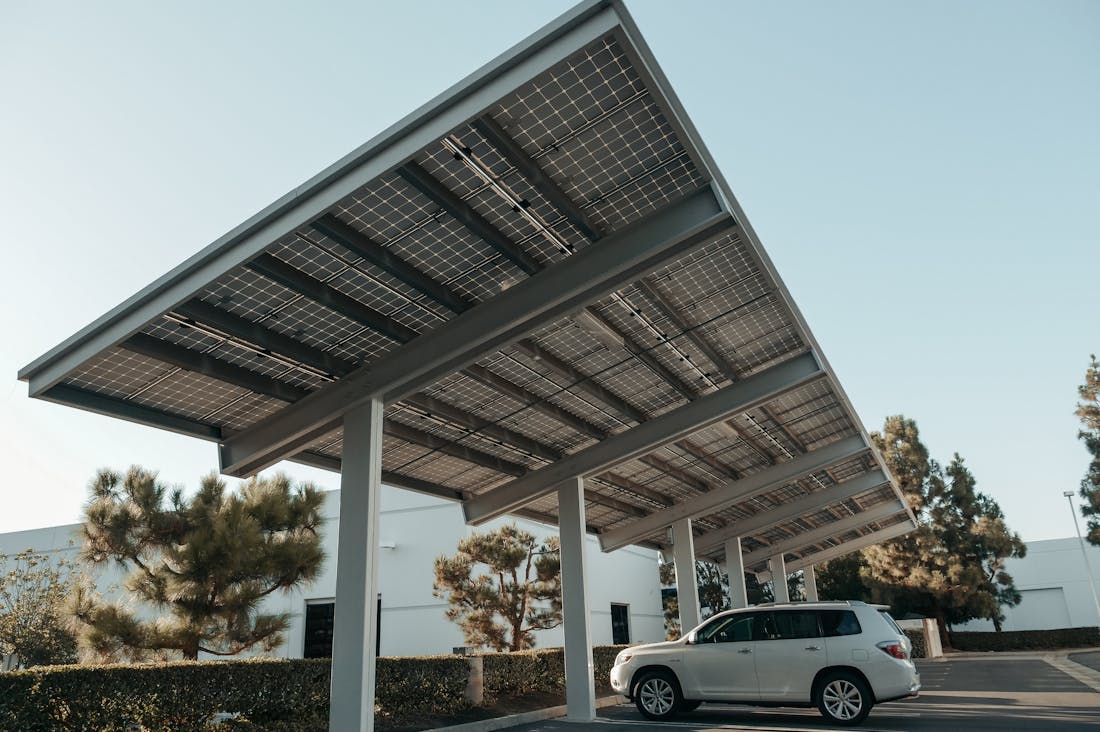In a rapidly evolving world, the automotive landscape is undergoing a transformation like never before. "Navigating the Future of Auto Technology: Innovations That Will Change the Way You Drive" explores groundbreaking advancements that promise to redefine our driving experiences. From electric vehicles to autonomous systems, these innovations are not just trends—they are revolutionizing mobility, safety, and sustainability. As we stand on the brink of this technological renaissance, understanding these changes is essential for drivers and enthusiasts alike. Join us on a journey into the future of transportation, where innovation meets practicality, and the way we travel will never be the same.

Key Innovations Shaping the Next Generation of Vehicles
Key innovations are revolutionizing the next generation of vehicles, leading towards a more sustainable and efficient future. Electric vehicle (EV) technology, particularly advancements in battery efficiency and charging infrastructure, has made EVs more accessible and practical for consumers. Autonomous driving systems powered by artificial intelligence are enhancing safety and transforming the driving experience, enabling features like advanced driver assistance and full self-driving capabilities. Additionally, connectivity through the Internet of Things (IoT) is allowing vehicles to communicate with each other and infrastructure, optimizing traffic flow and improving safety. Lightweight materials and improved aerodynamics are further enhancing fuel efficiency, contributing to a greener automotive landscape. Together, these innovations are paving the way for smarter, safer, and more environmentally-friendly transportation solutions.

The Impact of Autonomous Driving Technologies on Commuting
Autonomous driving technologies are poised to revolutionize commuting by offering enhanced safety, increased efficiency, and greater accessibility. By utilizing advanced sensors, artificial intelligence, and real-time data analysis, self-driving vehicles can minimize human errors that contribute to accidents, thereby drastically reducing traffic-related fatalities. Moreover, these technologies promise to alleviate congestion by optimizing traffic flow and enabling vehicles to communicate with one another and traffic management systems. For individuals with mobility challenges, autonomous vehicles can provide newfound independence, facilitating access to transportation where it was previously limited. Additionally, the rise of shared autonomous vehicles could lead to reduced ownership rates, fostering more sustainable urban environments. Overall, the integration of autonomous driving technologies into daily commuting has the potential to transform not only how we travel but also the very fabric of urban infrastructure and societal dynamics.

Sustainability Trends in the Automotive Industry
Sustainability trends in the automotive industry have gained significant momentum as manufacturers respond to increasing consumer demands for environmentally friendly practices and products. Key developments include the shift toward electric vehicles (EVs), driven by advancements in battery technology, reducing dependency on fossil fuels and cutting greenhouse gas emissions. Many companies are investing in renewable energy sources for their production processes while exploring alternative materials, such as sustainable plastics and composites, to decrease ecological footprints. Automakers are also adopting circular economy principles, focusing on recycling and reusing materials to minimize waste. Additionally, innovations in autonomous driving and shared mobility aim to reduce vehicle ownership rates and promote more efficient transportation, further contributing to a sustainable future.
The Role of Smart Technology in Vehicles
Smart technology is increasingly becoming a cornerstone of modern vehicles, enhancing not only safety but also the overall driving experience. Features such as infotainment systems, navigation aids, and voice-controlled interfaces make driving more convenient and enjoyable. Moreover, these technologies provide real-time data to drivers, alerting them to potential hazards and enabling better decision-making on the road. Integration with smartphones and other devices allows for seamless connectivity, ensuring that drivers remain informed and engaged. As smart technology continues to evolve, it will play a vital role in shaping the future of automotive design and functionality.
Impact of Government Regulations on Auto Innovations
Government regulations are significantly influencing the trajectory of automotive innovations as authorities worldwide strive to address environmental concerns and enhance road safety. Stricter emissions standards encourage manufacturers to innovate and adopt cleaner technologies, accelerating the transition to electric and hybrid vehicles. Additionally, regulations promoting the development of autonomous driving systems are paving the way for safer roads, as they mandate rigorous testing and compliance. These regulations not only drive technological advancements but also ensure that consumers benefit from safer, more efficient vehicles. The balance between innovation and regulation is crucial for a sustainable automotive future.
Consumer Attitudes Toward New Automotive Technologies
Consumer attitudes towards new automotive technologies are evolving, reflecting a growing acceptance of innovations like electric and autonomous vehicles. Educational initiatives and increased awareness about the environmental benefits of EVs are leading to higher consumer interest and adoption rates. However, concerns about range anxiety, charging infrastructure, and the reliability of self-driving systems still persist. As manufacturers address these concerns through advancements in battery technology and enhanced safety features, consumer confidence is likely to increase. Understanding consumer preferences is essential for automakers as they tailor their offerings to meet the demands of a rapidly changing market.
The Future of Mobility and Urban Transportation
The future of mobility is shaping a new paradigm in urban transportation, with emerging trends focusing on sustainability, accessibility, and efficiency. As cities grapple with congestion and pollution, innovative solutions such as shared mobility services, e-scooters, and integrated public transit systems are gaining traction. These options not only reduce the number of vehicles on the road but also promote eco-friendly travel choices. Furthermore, urban planners are increasingly incorporating smart city concepts that leverage data analytics to improve infrastructure and enhance the overall commuting experience. This holistic approach to transportation will redefine how we navigate urban spaces in the coming decades.
AI-Assisted Content Disclaimer
This article was created with AI assistance and reviewed by a human for accuracy and clarity.